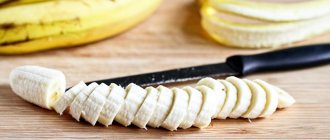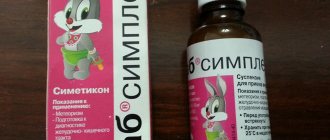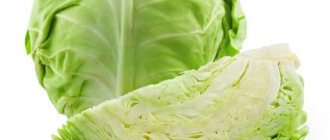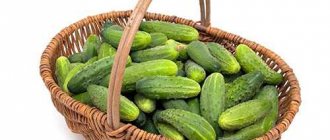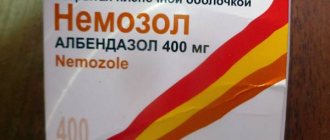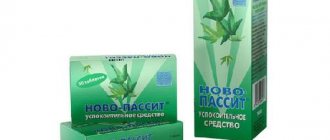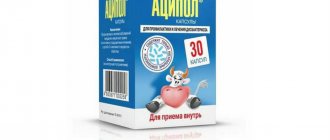Pharmacodynamics and pharmacokinetics
What is Smecta?
Wikipedia states that dioctahedral smectite is a mixed silicate (or, according to other sources, a mixed oxide) of magnesium and aluminum of natural origin.
The action of the drug is aimed at binding and removing various substances (including toxic) and gases from the digestive tract.
Pharmacodynamics
Diosmectite has a stereometric structure and is a highly plastic viscous substance.
These properties explain the selectivity of the sorption effect of the drug (Smecta selectively adsorbs viruses and bacteria of the digestive canal ) and the high enveloping ability relative to the mucous membrane of the digestive canal .
By interacting with mucin glycoproteins (mucosal secretion of the gastrointestinal tract) and forming polyvalent bonds with them, diosmectite increases the cytoprotective properties of mucus and, consequently, its resistance to irritants: bile salts, hydrogen ions (hydrochloric acid), pathogenic microorganisms, the toxins they produce and other aggressive factors .
Blind randomized studies of the effectiveness of the drug compared to placebo , which included 602 patients aged 1 month to 3 years with a diagnosis of acute diarrhea , showed that in the group receiving Smecta in combination with oral rehydration solutions, the frequency of bowel movements was significantly reduced over the course of first 72 hours.
Pharmacokinetics
Aluminum contained in smectite is not absorbed from the gastrointestinal tract, including in diseases of the digestive tract, which are accompanied by symptoms of colonopathy and colitis .
Dioctahedral smectite is characterized by a slight swelling effect, in therapeutic doses does not change the physiological time of passage of food through the intestines, does not stain feces, is not metabolized and is excreted unchanged.
The drug is x-ray transparent.
Composition and beneficial effects
Smectite is called a natural remedy because the main component (dioctahedral smectite) is a mineral formed from soil rocks that contains magnesium and aluminum silicates. Microparticles are layered, which allows them to accumulate a positive charge inside and a negative charge on the surface. Thanks to its natural properties, the phenomenon of adsorption manifests itself - the ability to attract and retain other substances on its surface.
Flavoring additives improve the composition. In powders: glucose, saccharin, vanilla and orange flavoring. In suspension: xanthan gum, citric and ascorbic acids, potassium sorbate, sucralose and caramel-cocoa flavor. Thanks to its pleasant taste, the child does not refuse to take the medicine.
According to the abstract, according to the pharmacological classification, Smecta is included in the group of antidiarrheal drugs. In addition to combating diarrhea, it alleviates the patient’s general condition, eliminates colic and increased gas formation in newborns, abdominal pain and heartburn in older children. For infectious intestinal lesions, the medicine manages to remove 85% of pathogenic pathogens and prevent a serious condition.
The effect of the drug is based not only on its sorbing properties. Smecta enhances mucus production by epithelial cells of the stomach and intestines. The intestines are enveloped, protecting against the negative effects of toxins and waste substances. Timely cleansing allows you to preserve beneficial flora in the colon, prevent dysbacteriosis, and stimulate the production of local immune cells.
Indications for use of Smecta: why does Smecta help children and why is it used in adults?
Indications for use of Smecta are the same for adults and children, including infants over 4 weeks of age.
According to the annotation, the medicine is effective for diarrhea of drug or allergic origin. It helps against diarrhea caused by a violation of the quality of the composition and/or diet, with “travelers’ diarrhea,” as well as with disorders provoked by infectious diseases (for diarrhea of infectious origin, the drug is used as part of complex therapy).
The remedy can be prescribed for heartburn, abdominal discomfort, bloating and other symptoms of dyspepsia , which accompany many diseases of the digestive system.
In case of irritable bowel syndrome, Smecta does not reduce diarrhea , however, it significantly alleviates the patient’s condition due to the sorption and removal of excess gases in the intestines.
Smecta for poisoning
Does the drug help with poisoning? If toxic substances enter the body through the stomach, of course.
Smecta effectively removes toxins that have been absorbed into the gastrointestinal mucosa, while helping to restore the natural balance of intestinal microflora and creating a favorable habitat for its beneficial representatives.
Thanks to the unique structure of diosmectite , which is obtained through complex technological processing from specific clay and shell rock, the drug gently lines the mucous membrane of the digestive tube, strengthening its barrier function and giving damaged cells the opportunity to recover.
Smecta for vomiting
The use of the drug for vomiting is permissible in cases where the gag reflex is not a symptom of severe pathology of the digestive organs.
Before taking Smecta, an adult is recommended to perform a gastric lavage, since this procedure helps remove a significant part of toxic substances from the body and speeds up the effect of diosmectite.
When vomiting in children, the use of sorbent is resorted to, as a rule, in situations where food poisoning contributed to the activation of the gag reflex.
Why does the powder help animals?
Smecta is used in veterinary practice to alleviate the condition of animals with vomiting, stool disorders and poisoning.
During the research, it was found that in dogs suffering from diarrhea , when using the drug as an addition to the diet and main therapy, recovery occurred 2-3 days earlier than in the group of animals that did not receive Smecta.
Indications for use of the drug
When using Smecta, pediatricians are guided by the instructions, a list of conditions in which the effectiveness and safety of the drug is guaranteed from infancy. Indications include:
- food poisoning;
- diarrhea caused by a suspected allergic reaction in response to the use of any medication or change in diet;
- diarrhea due to the use of antibiotics;
- increased proliferation of opportunistic bacteria, which causes dysbacteriosis;
- intestinal bacterial infections (salmonellosis, dysentery, typhoid fever, cholera), viral infection due to influenza, rotavirus gastroenteritis;
- unclear signs of digestive problems in the child’s body in the form of flatulence, discomfort, heartburn, vomiting, colic.
Smecta is a first aid remedy after gastric lavage for food poisoning. Therefore, it is recommended to keep it in stock in your home medicine cabinet.
Important! If toxic effects of strong toxic substances (mushrooms, plants) are suspected, then the use of the drug is not enough. Stronger enterosorbents (Polysorb, Enterosgel) and antidotes are needed. In severe cases, Smecta does not help.
Contraindications
The drug has very few contraindications for use. Thus, Smecta is not prescribed for intestinal obstruction , known hypersensitivity to the components of the powder, food intolerance to fructose, deficiency of the sucrase-isomaltase complex, malabsorption syndrome (malabsorption) of glucose and galactose .
It is also not recommended to take the suspension in case of osmotic diarrhea . This is explained by the fact that additional sorption of nutrients can provoke an increase in malabsorption syndrome.
The medicine is prescribed with caution to patients of severe chronic constipation .
Side effects
During clinical trials, it was found that the drug can cause constipation . This phenomenon occurs quite rarely and goes away after an individual change in the dosage regimen.
Some patients may experience vomiting and flatulence .
During the post-registration period, cases of the development of hypersensitivity reactions were recorded, which included the appearance of skin rashes, urticaria , itching, and angioedema . The frequency of these side effects is unknown.
special instructions
Diarrhea (especially in children) increases the risk of electrolyte imbalance and dehydration . To avoid this, the child is usually prescribed Regidron and Smecta together. Instead of Regidron, you can use the drugs Citraglucosolan , Disol , Trisol , Reosolan , Gidrovit , etc.
Oral rehydration salt solution helps replenish electrolytes lost during vomiting and diarrhea, the glucose it contains improves salt absorption, and citrates help correct the balance in metabolic acidosis .
For adults, rehydration agents are prescribed if necessary. The amount of rehydration depends on the course of the disease, the age of the patient and the intensity of diarrhea.
Analogues of Smecta
Level 4 ATC code matches:
Polyvinylpyrrolidone
Entegnin
Polysorb
Polyphepan
Enterosgel
Atoxyl
Neosmectin
Filtrum Safari
Filtrum STI
Lactofiltrum
Enterodesis
Synonyms for Smecta are: Diosmectite and Neosmectin . When choosing an analogue for children, preference is given to the drug Neosmectin .
The following mechanisms of action have a similar mechanism of action: Activated carbon , Microcel , Laktofiltrum , Lignosorb , Polysorb MP , Filtrum-STI , Polyphepan , Enterodes , Entegnin , Enterosorb Enterosgel , Enterumin , - 1 .
What is better - Neosmectin or Smecta?
Neosmectin is a complete analogue of the drug Smecta. The difference between these products is that the first is produced by the Russian company Pharmstandard-Leksredstva OJSC, while Smecta is produced by the French company Ipsen Pharma.
Smecta or activated carbon - which is better?
Both Smecta and activated carbon are preparations with sorption properties .
However, Smecta has a number of advantages in comparison with the latter. Firstly, this drug is distinguished by its selectivity of action: it removes toxic substances, hydrochloric acid, excess bile acids and viruses, but does not take the substances it needs from the body.
Activated carbon, along with pathogenic microorganisms and poisons of biological origin, also removes beneficial bacteria, without which the stomach and intestines subsequently cannot function normally. Diosmectite helps create the most optimal conditions in the body for the development of beneficial microflora.
Secondly, acting very gently, the drug envelops the walls of the digestive canal, protecting them from aggressive factors, while activated carbon , which has a rigid structure, can further injure them.
Smecta for children: instructions for newborns
Smecta for newborns is often an indispensable drug, since most digestive problems arise in the first weeks of a baby’s life.
The manufacturer's instructions do not contain instructions on how to give Smecta to infants under 4 weeks of age, so most young mothers naturally have questions about whether Smecta can be given to newborns and whether this drug will harm the baby.
The answer is clear - you can (after all, diosmectite is nothing more than well-purified clay, which is not absorbed or metabolized in the body), but only under the supervision of the attending physician and with his approval.
The drug is prescribed for eating disorders accompanied by bloating and abdominal pain, the development of diarrhea and vomiting syndrome. It is also recommended to be given for jaundice .
The dosage of Smecta for newborns is selected by the doctor.
There is no difference in how to dilute Smecta for a newborn baby and an older child. The dose recommended by the doctor is slowly, stirring constantly, poured into 50 ml of warm milk, water or formula for artificial nutrition and stirred until smooth.
The specified volume of liquid must be given to the child in several doses.
Most mothers leave positive reviews about the use of the drug in newborns, but note that children prone to constipation should be given Smecta with caution.
How to prepare medicine
The medication received favorable reviews due to its ease of use: it is available in powder form. When diluted, it turns into a liquid with a pleasant taste. “Smecta” for children is available in orange or strawberry flavors.
For infants, instead of purified water for dilution, it is permissible to use expressed breast milk or nutritional formula. To prevent the baby from getting used to the bottle, it is recommended to drink the medicine from a small spoon.
If the pharmaceutical powder is diluted with distilled water, take a volume of 100 ml, if with a mixture - 50 ml. How to breed Smecta for a child is determined by each parent himself, being directly dependent on the severity of the child’s symptoms and the infant’s taste preferences. Some people prefer to drink water, while others refuse it completely; we need to come up with something else. For example, give weakly brewed tea.
Usually it is enough to use the contents of one sachet per day for 2-3 days. When diluting medicine for a child under two years of age, it is necessary to remember that long-term use of enterosorbents can cause constipation. If there is no positive effect for more than two days, it is better to consult a pediatrician again, who will recommend a suitable analogue instead of Smecta.
Use with alcohol
Diosmectite reduces the rate of absorption of alcohol.
To reduce the effect of intoxication, immediately before the feast you should take 2-3 sachets of the drug.
To prevent the development of hangover syndrome , Smecta is taken after drinking alcohol.
If there is vomiting within 30 minutes after taking the suspension, the drug is repeated in a double dose. In case of poisoning with alcohol surrogates, it is necessary to induce vomiting, then take three sachets of Smecta and call an ambulance.
How to use the drug
It is convenient to give Smecta to a child from the age of 1 month due to its powder form. The drug is administered through a bottle. You need to dilute the baby powder with boiled water. You need to give your baby medicine no more than 3 times a day. In this case, the daily norm should not exceed 30 ml. A dosage of 30 ml is suitable for newborns up to 6 months.
After six months, you can increase the dose per dose to 50 ml. The daily dose cannot exceed 150 ml. If the child is older than one year, a dose of no more than 70-100 ml can be prescribed per dose. In total, 210 ml of the drug can be given per day.
The medication can be used for no more than 3-5 days in a row. The intake should be 20-30 minutes before meals. Smecta can be given from the age of 1 month only after consulting a pediatrician . Different cases of pathology determine treatment tactics individually. One child may be treated with Smecta, while another child may be contraindicated.
Smecta during pregnancy and breastfeeding
Can pregnant women use Smecta?
The drug can be used in pregnant women. According to the instructions for Smecta, during pregnancy there is no need to adjust the regimen and dosage of the drug.
In pregnant women, the drug is used to reduce the severity of heartburn, normalize digestion, prevent the development of intestinal candidiasis against the background of reduced immunity , and also to prevent toxicosis .
It has been scientifically and practically proven that diosmectite does not have a negative effect on the process of prenatal development and is completely safe for the fetus.
If necessary, unless the doctor gives other instructions, you can take Smecta one sachet three times a day. Five days are usually enough to reduce the acidity of gastric juice and normalize the production of digestive enzymes.
Can a nursing mother take Smecta powder?
The drug is approved for use during lactation and can be used in standard doses.
Dose and dilution rules
The dosage for a 2 year old child of Smecta is 1-2 sachets/day.
In this case, the following rules are observed:
- the powder is diluted in 100 ml of water;
- the resulting portion is divided into 2-3 doses;
- Give the child a ready-made suspension between meals.
Unused solution should be stored in the refrigerator and used within a day.
In the first 3 days, the child is given 2 sachets, then the dose is reduced to 1 sachet per day . The course of treatment should not exceed 7 days. If during this time the baby’s well-being does not improve while taking Smecta, you should consult a doctor about prescribing another medicine.
Smecta powder does not have an unpleasant taste and has a pleasant smell of vanilla or orange. If the baby is capricious, refusing to drink the water solution, then the contents of the bag can be diluted with juice, compote, tea or another child’s drink.
Reviews about Smecta
Smecta is an original medicine containing a naturally occurring substance, diosmectite, as an active substance. The latter, being a silicate of Mg and Al, differs favorably from other silicon compounds in its structure and properties.
The diosmectite molecule has a stereometric configuration and is characterized by increased plastic viscosity, due to which the drug not only effectively adsorbs harmful substances, but also has a protective effect on the mucous membrane of the digestive tube.
Most of the reviews are reviews of Smecta for children, and, in particular, for infants and newborns. Acting quickly and gently, the drug relieves symptoms of poisoning, relieves heartburn, and eliminates infectious digestive problems. Therefore, according to most mothers, in families with children, it must be in first aid kits.
The main advantages of Smecta are:
- “children’s” dosage form and pleasant taste;
- the ability to significantly reduce the duration of the disease and, accordingly, the costs of treatment (this fact is confirmed by numerous studies and, in particular, studies conducted by SIGEP specialists);
- good tolerance;
- few restrictions on use.
To date, there is encouraging data on the effectiveness of the drug in the treatment of gastroesophageal reflux in children in the first 4 weeks of newborn life, as well as on its use for prophylactic purposes to prevent the development of chronic diarrhea during radiation therapy in patients with cancer .
How much does it cost at the Smecta pharmacy?
The price of Smecta in a pharmacy may vary depending on the number of portioned sachets in the package.
The cost of package No. 10 in Ukraine is 69-94 UAH; you can buy a package of 30 sachets for 198-230 UAH.
If it is necessary to use the drug for children (in particular, for newborns), take into account the likelihood of constipation. In predisposed children, the drug is used in a reduced dose, so it is advisable to buy it not in packaging, but individually.
The price for 1 sachet is about 8 UAH.
The price of Smecta in Russian pharmacies is from 150 to 170 rubles. for package No. 10. The cost of package No. 30 is from 325 rubles. One portioned bag can be purchased for an average of 11-13 rubles.
- Online pharmacies in RussiaRussia
- Online pharmacies in UkraineUkraine
- Online pharmacies in KazakhstanKazakhstan
ZdravCity
- Smecta suspension for oral administration (caramel-cocoa) pack.
3g 8 pcs PHARMATIS/Bofur Ipsen Industry FR 252 RUR order - Smecta powder for Prig Susp. for internal approx. orange 3g 10 pcs Beaufour Ipsen
150 rub. order
- Smecta powder for Prig Susp. for internal approx. vanilla 3g 10 pcs Beaufour Ipsen
150 rub. order
- Smecta powder for Prig Susp. for internal approx. strawberry pack 3g 10 pcs. Bofur Ipsen Industry
150 rub. order
Pharmacy Dialogue
- Smecta bags No. 10 orangeBeaufour Ipsen Industrie
RUB 161 order
- Smecta bags No. 10 vanillaBeaufour Ipsen Industrie
148 RUR order
Europharm* 4% discount using promo code medside11
- Smecta suspension for oral administration 3 g 8 packet caramel/cocoaPHARMATIS/Bofur Ipsen Industry FR
320 rub. order
- Smecta powder vanilla n10Bofur Ipsen Industry
RUB 165 order
- Smecta powder strawberry 3 g 10 pcs Bofur Ipsen Industry
RUB 156 order
- Smecta powder orange 10 pcs Bofur Ipsen Industry
166 RUR order
show more
Pharmacy24
- Smecta 3g N12 orange-vanilla powder for oral suspension Beaufour-Ipsen Industrie, France
111 UAH.order - Smecta strawberry 3 g N12 powder Beaufour-Ipsen Industrie, France
111 UAH order
- Smecta 3 g N12 vanilla powder Beaufour-Ipsen Industrie, France
111 UAH order
PaniPharmacy
- Smecta Orange-Vanilla por. d/p susp. 3g No. 12
124 UAH order
- Smecta Vanilla por. d/p susp. 3g No. 12
118 UAH order
- Smecta Strawberry por. d/p susp. 3g No. 12
121 UAH order
- Smecta Smecta por. d/p susp. 3g No. 10 France, Beaufour Ipsen Industrie
96 UAH order
show more
Dosage forms of Smecta that can be given to children
Smecta for children and adults is produced in the same forms: bags of powder, which must be used for preliminary dilution with water, and a ready-made thick suspension called “caramel-cocoa”.
The powder is yellow-gray in color, finely dispersed, has a smell depending on the included flavoring. A solution for drinking is prepared from it. When you open the package with the suspension, a pasty gray-blue thick liquid flows out. The taste and smell resembles cocoa and caramel. Each sachet, regardless of type, contains a strictly dosed amount of the main active ingredient - 3 g.
The drug is produced in France. At the pharmacy you can purchase the domestic generic Neosmectin with a similar composition.


